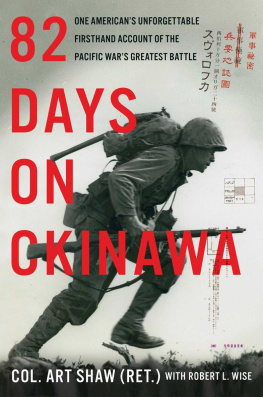Cover copyright 2020 Hachette Book Group, Inc.
Hachette Book Group supports the right to free expression and the value of copyright. The purpose of copyright is to encourage writers and artists to produce the creative works that enrich our culture.
The scanning, uploading, and distribution of this book without permission is a theft of the authors intellectual property. If you would like permission to use material from the book (other than for review purposes), please contact permissions@hbgusa.com. Thank you for your support of the authors rights.
Hachette Books is a division of Hachette Book Group, Inc. The Hachette Books name and logo are trademarks of Hachette Book Group, Inc.
The Hachette Speakers Bureau provides a wide range of authors for speaking events. To find out more, go to www.hachettespeakersbureau.com or call (866) 376-6591.
The publisher is not responsible for websites (or their content) that are not owned by the publisher.
Library of Congress Cataloging-in-Publication Data has been applied for.
The only course left is for Japans one hundred million people to sacrifice their lives by charging the enemy to make them lose the will to fight.
IMPERIAL JAPANESE HEADQUARTERS WAR JOURNAL, 1945
WITH SIXTY-NINE PLANES AND TWENTY-SIX hundred crewmen, the USS Franklin had recently joined Admiral Marc Mitschers Fast Carrier Task Force, TF-58, in the Pacific Ocean waters between Okinawa and Japan to begin air operations against Japan on March 18.
The modern Essex-class carrier was launched in 1943, and in 1944 she participated in the Peleliu and Philippines campaigns. On October 30, near Leyte Gulf, a kamikaze crashed her flight deck. The Japanese planes 550-pound bomb exploded in a ready room, wiping out a battle-dressing station. Fifty-six men died. After repairs at the Puget Sound Naval Shipyard in Bremerton, Washington, Franklin returned to the Pacific.
Big Ben, as her crewmen fondly called her, had a new skipper, Captain Leslie Gehres, and at Pearl Harbor, she acquired a new chaplain, the Reverend Joseph OCallahan, a Catholic priest.
OCallahan celebrated Mass for Franklins sailors on Saturday, March 17Saint Patricks Daygiving general absolution to twelve hundred men. TF-58s pilots and sailors would have no time for Mass on Sunday, when carrier planes would begin attacking airfields on Kyushu, Japans southernmost island.
The Fast Carrier Forces objective was to neutralize the airfields in southern Kyushu that were the staging areas for enemy suicide planes, or kamikazes. This was vitally important, because on April 1, the Pacific wars largest amphibious campaign, Operation Iceberg, would begin at Okinawa.
On schedule, March 18, hundreds of warplanes from TF-58s seventeen carriers attacked Kyushus fifty-five airfields and their hangars and the shipyards on the Inland Sea with bombs, rockets, torpedoes, and machine-gun fire. They destroyed hangars and parked aircraft, pitted airstrips with bombs, and damaged seventeen Japanese ships in the Inland Sea, and at Kobe and Kure.
The Japanese deployed five submarines to sink the carriers, but US destroyers and dive-bombers, by now well schooled in hunting down subs, sank them all.
With better prospects for success, Admiral Matome Ugaki, commander of the 5th Air Fleet at Kyushu, dispatched 193 aircraft, including 69 suicide planes from his Special Attack Unit, on March 18. Ugakis pilots bombed the Enterprise, Intrepid, and Yorktown. Seven sailors died, but damage to the carriers was minimal and the ships were able to continue operations.
The Japanese suicide squadrons were a desperate expedient adopted in October 1944, as Allied forces prepared to invade the Philippines, to address the yawning disparity between American and Japanese air and naval strength. In the ensuing months, the kamikazes had become a pillar of Japanese air strategy as other options had vanished in a blizzard of American bomb attacks. Conscripts now filled many of the cockpits because of the shrinking number of kamikaze volunteers.
THE FAST CARRIER TASK FORCE was 55 miles from Kyushu at dawn on March 19 when Big Ben launched forty-five of her planes, while twenty-two other aircraft were being fueled on Franklins hangar deck. Mitschers task force had edged closer to Kyushu so that its squadrons of Hellcats, Corsairs, and Wildcats could more easily strike the enemy warships berthed beyond Kyushu at Kobe and Kure.
Franklins radar screens were free of bogeys at 7 a.m. when Captain Gehres scaled back her readiness level from General Quarters to Condition III, allowing his men to go to the mess hall for their first hot meal in three days. Within minutes, hundreds of hungry sailors were queued up on the hangar deck for breakfast, waiting to descend the ladder to the galley one deck below.
At 7:08 a.m., without any warning, a dive-bomber displaying the Rising Sun meatball insignia flashed out of the base of a low cloud 1,000 yards ahead of Franklin and made a mast-level bombing run. In the blink of an eye, it released two 550-pound bombs and escaped before gunners could find its range.
Both bombs crashed through the flight deck, exploding nearly simultaneously in the hangar space below. Fed by fuel vapor, a chain of explosions roared through the armed Avengers, Corsairs, and Hellcats on the hangar deck, rocking the ship. Idling Corsairs burst into flame, and their whirling propellers slashed adjacent planes and men. All but two of the more than five hundred men in the hangar deck areacrewmen either standing in line for breakfast or servicing planeswere instantly incinerated, among them Elden Rogers.
I saw guys flying through the air from the explosions, said Seaman 1/c Ralph Packard, who was on the nearby destroyer Hunt. I saw men running around on fire, just flaming torches. Electrician Mate Al Cole watched sailors jump off the flight deck into the sea, drowning right and left.
On Franklins flight deck, Seaman 2/c George Sippel grabbed the arm of a man running in terror toward him, hollering and screaming, and the mans arm came off in Sippels hand. It was just like a turkey leg, he said. It was cooked right through. Horrified, Sippel threw the arm overboard.














